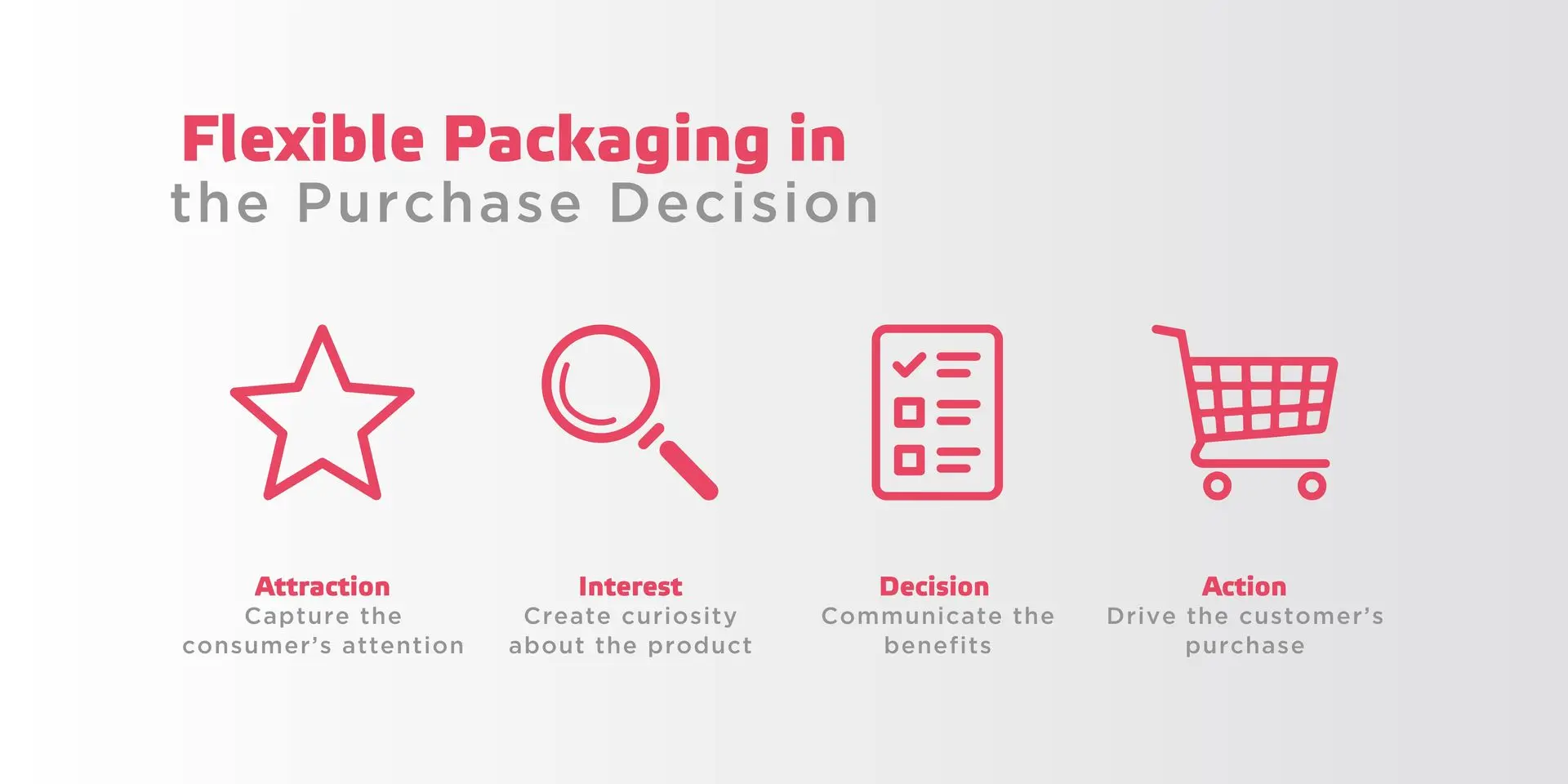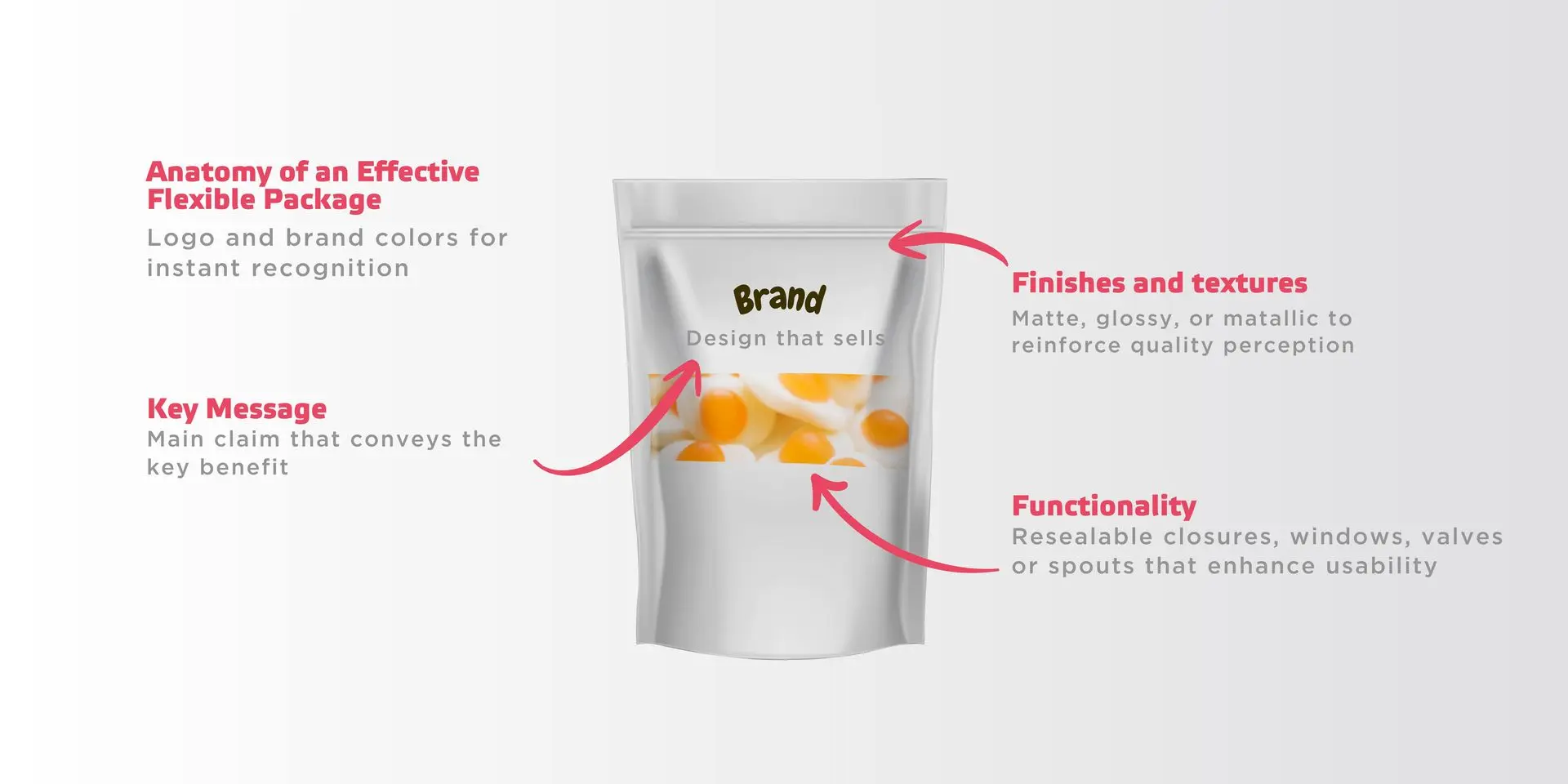In today’s competitive market, having a high-quality product is no longer enough. The way it’s presented, primarily through its packaging, has become a decisive factor in attracting attention, communicating brand value, and building customer loyalty.
When it comes to flexible packaging, such as bags and rolls, its role goes far beyond product protection: it´s a visual, tactile, and functional communication tool that directly influences consumer perception and purchase decisions.
1. Packaging as the First Marketing Touchpoint
On the shelf, flexible packaging is often the first touchpoint between a customer and a product. Before reading a review or trying the product, the consumer perceives the colors, textures, design, and information displayed on the bag or rollstock.
Neuromarketing studies confirm that:
- Colors: Each tone triggers different emotional responses. Blue inspires trust, green conveys naturalness, and red generates urgency.
- Visual composition: Images that direct the eye toward the logo or key benefit increase visual retention.
- Visual storytelling: Designs that tell a brand story create emotional connection and better recall.
This initial contact, lasting just a few seconds, is crucial for influencing whether the consumer chooses your product over a competitor’s.

2. Representing Your Brand in Every Detail
Flexible packaging is not just a container; it´s the physical representation of a brand’s identity. Through its materials, finishes, and structure, it reflects:
- The company’s philosophy (e.g., sustainability with recyclable or compostable materials).
- The market segment it targets (metallic finishes for premium positioning, for example).
- The experience aims to provide the user (resealable closures, dispensing spouts, transparent windows.
Every design decision should align with the brand’s overall communication strategy.
3. How Packaging Design Drives Marketing and Sales
An effective flexible packaging design fulfills multiple strategic functions:
3.1 Shelf Differentiation
With crowded markets, a package that combines strong aesthetics and functionality can stand out among similar products, increasing brand recognition and preference.
3.2 Instant Communication of Value
In seconds, packaging should answer:
- What is the product?
- Why should I buy it?
- What makes it unique?
3.3 Enhancing the Customer Experience
Features like easy-open systems, valves, handles, or moisture resistance add genuine value, improve satisfaction, and encourage repeat purchases.

4. Neuromarketing Applied to Flexible Packaging Design
Neuromarketing offers insights to connect with consumers at a deeper level:
- Colors and contrasts to guide emotions and highlight attributes.
- Directional imagery to lead the eye toward key elements.
- Graphic storytelling to convey brand values and product origin.
- Textures and finishes that reinforce the perception of quality.
This approach doesn’t just beautify packaging; it increases the likelihood of conversion at the point of sale.
5. Investing in Design: A Long-Term Strategic Decision
In today’s competitive landscape, flexible packaging is a marketing asset. Investing in a well-thought-out design:
- Enhances perceived product value.
- Strengthens brand identity.
- Encourages customer loyalty.
- Reduces waste and logistical losses.
Leading brands don’t let their designs go stale; they update them regularly to remain relevant and competitive.
Extrupac’s Commitment to Functional and Attractive Design
At Extrupac, we understand that flexible packaging is much more than a wrapper; it’s a silent ambassador for your brand.
We manufacture custom bags and rollstocks that combine:
- High-barrier materials for maximum product preservation.
- Finishes and designs aligned with your marketing strategy.
- Solutions that improve user experience and reduce waste.
Because excellent packaging doesn’t just protect, it sells, communicates, and connects.
Flexible Packaging Design as a Strategic Marketing Tool